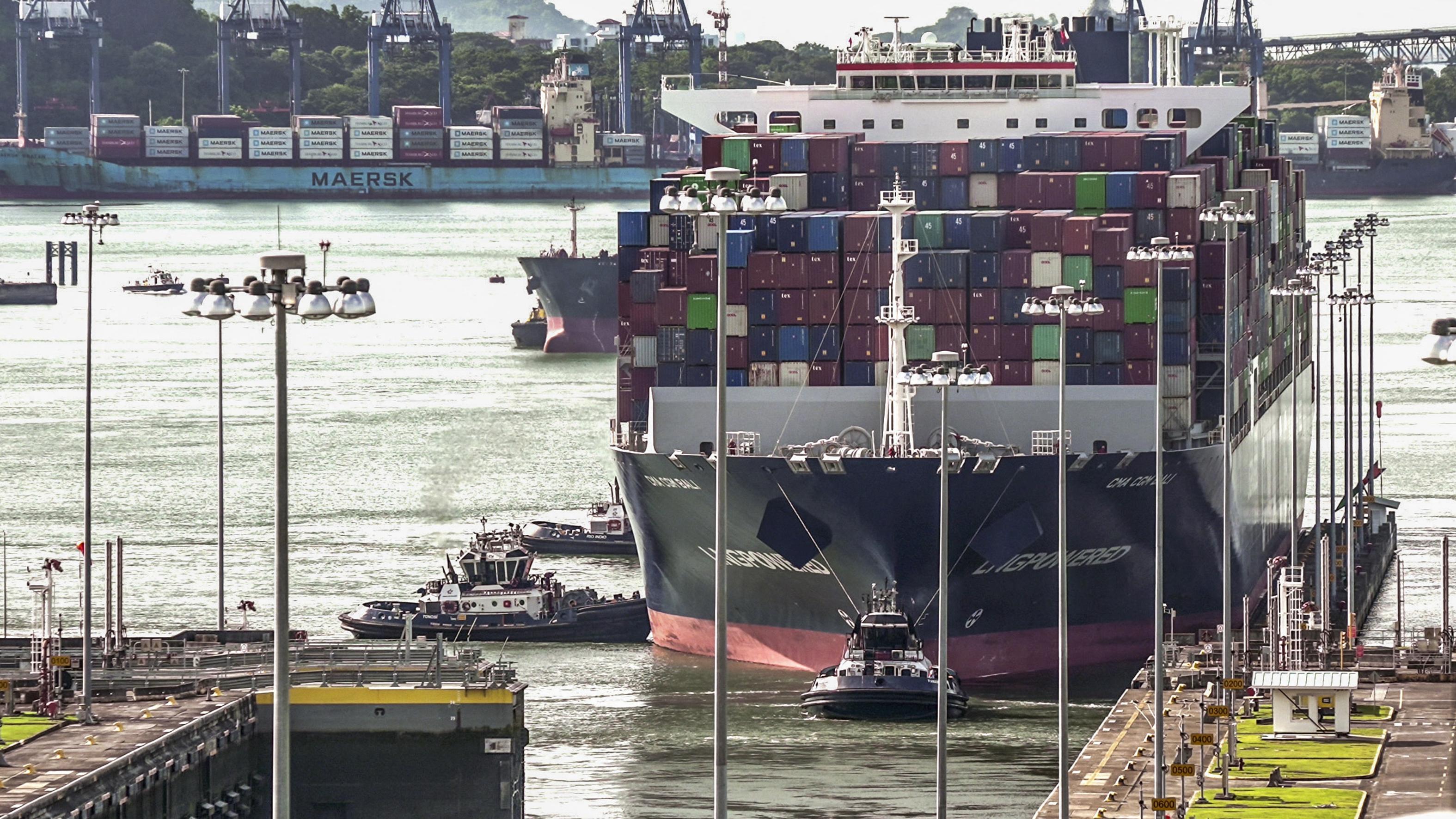 A cargo ship navigates through the Panama Canal in the area of the Cocoli Locks, in Panama City on Aug 25, 2023. (PHOTO / AFP)
A cargo ship navigates through the Panama Canal in the area of the Cocoli Locks, in Panama City on Aug 25, 2023. (PHOTO / AFP)
LONDON - The world is not on track for zero-emission fuels to account for 5 percent of international shipping fuels by 2030, a new analysis has found, jeopardizing the shipping industry's 2050 decarbonization goal.
Launched at the Global Maritime Forum's annual summit in Athens on Wednesday, the assessment finds that current scalable zero-emissions fuel (SZEF) production in the pipeline would cover just a quarter of the fuel needed by 2030.
This year, the International Maritime Organisation revised its greenhouse gas strategy, outlining the 5 percent goal but noting the industry should strive to achieve 10 percent zero-emission energy in international shipping fuels by the end of the decade
ALSO READ: UN's decarbonisation target for shipping to cost over US$1t
And the delivery of zero-emission vessels is also faltering. At the end of 2022, there were 24 ships capable of running on SZEF - mostly methanol - with another 144 on order.
But current orders are just one-fifth of what is needed to meet mid-term goals, found the report, carried out by the UMAS consultancy which includes University College London Energy Institute experts.
"It's just not enough at scale or at the pace that is needed," said Kathryn Palmer, shipping lead of the UN COP Climate Champions, at a press event.
"We need to see the demand and supply actors work together to implement specific solutions".
Global shipping is responsible for about 3 percent of the world's greenhouse gas emissions from human activities.
READ MORE: Low carbon, digitalization to boost industry transition
This year, the International Maritime Organisation revised its greenhouse gas strategy, outlining the 5 percent goal but noting the industry should strive to achieve 10 percent zero-emission energy in international shipping fuels by the end of the decade.
Five to 10 percent of the fuel demand for shipping in 2030 would amount to about 5.3 million metric tons of hydrogen, 29.8 million metric tons of ammonia, or 28.1 million metric tons of methanol.
It is estimated that the industry will have to invest about $40 billion annually in SZEF bunkering and production.


